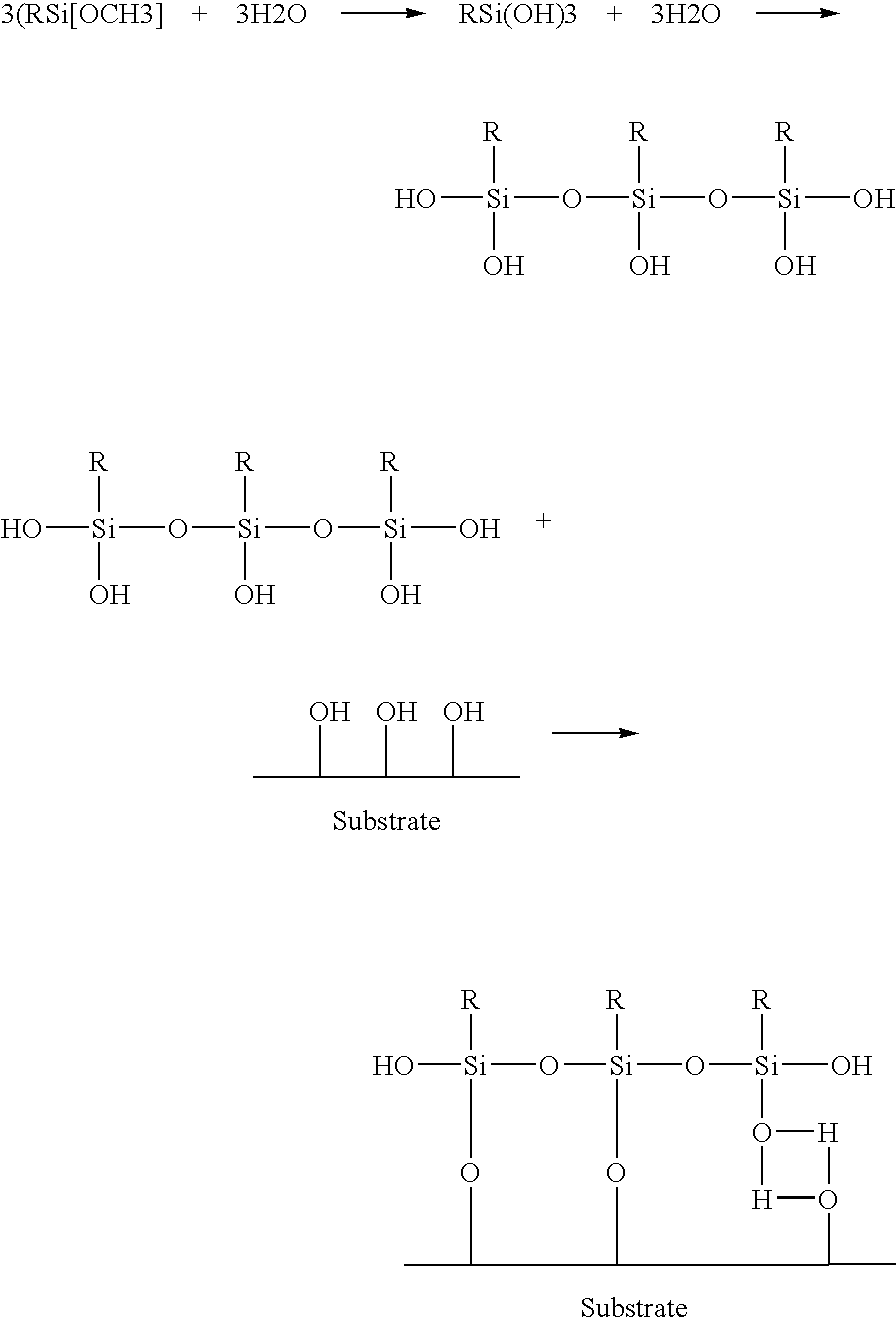Anti-icing material and surface treatments
a technology of anti-icing material and surface treatment, which is applied in the direction of coating, other chemical processes, chemistry apparatus and processes, etc., can solve the problems of affecting the lift produced, the aerodynamics of the wing, and the number of fatal accidents and loss of property, so as to improve the strength and density of chemical bonds
- Summary
- Abstract
- Description
- Claims
- Application Information
AI Technical Summary
Benefits of technology
Problems solved by technology
Method used
Image
Examples
example 1
Application of Initial Active Coating
[0075]Surface to be treated: aluminum coupon or coupons of carbon-fiber reinforced epoxy (CRE).
Surface Pretreatment: wash with soap and water to remove all dirt and oils; if still unclean, wash with solvent, such as toluene, and then wash with isopropanol followed by drying.
Surface Activation: methods of the type discussed hereinabove give acceptable results.
Material for Treatment: N-(3-triethoxysilylpropyl) gluconamide in 50% ethanol, which may optionally be diluted with absolute alcohol or absolute isopropanol down to 3%.
Treating Method: spray the surface with the solution at ambient temperature and let it stand for at least 3 minutes.
Curing the Surface: air drying for 15 minutes followed by 65° C. air for 30 minutes.
Testing Method Static technique. Water droplets, smaller than 50 microliters, are placed on the sample surface at least 1 mm apart and the sample is cooled to at least −7.5° C. in water-saturated air for at least three days. The sa...
example 1.1
Treatment of Cleaned Aluminum Coupons
[0076]The treated surface did not permit the water to freeze.
example 1.2
Treatment of Aluminum Coupons Cleaned with Sodium Phosphate
[0077]There was no meaningful difference between aluminum coupons cleaned with sodium phosphate and those cleaned with water.
PUM
| Property | Measurement | Unit |
|---|---|---|
| temperature | aaaaa | aaaaa |
| temperature | aaaaa | aaaaa |
| temperature | aaaaa | aaaaa |
Abstract
Description
Claims
Application Information
 Login to View More
Login to View More - R&D
- Intellectual Property
- Life Sciences
- Materials
- Tech Scout
- Unparalleled Data Quality
- Higher Quality Content
- 60% Fewer Hallucinations
Browse by: Latest US Patents, China's latest patents, Technical Efficacy Thesaurus, Application Domain, Technology Topic, Popular Technical Reports.
© 2025 PatSnap. All rights reserved.Legal|Privacy policy|Modern Slavery Act Transparency Statement|Sitemap|About US| Contact US: help@patsnap.com

